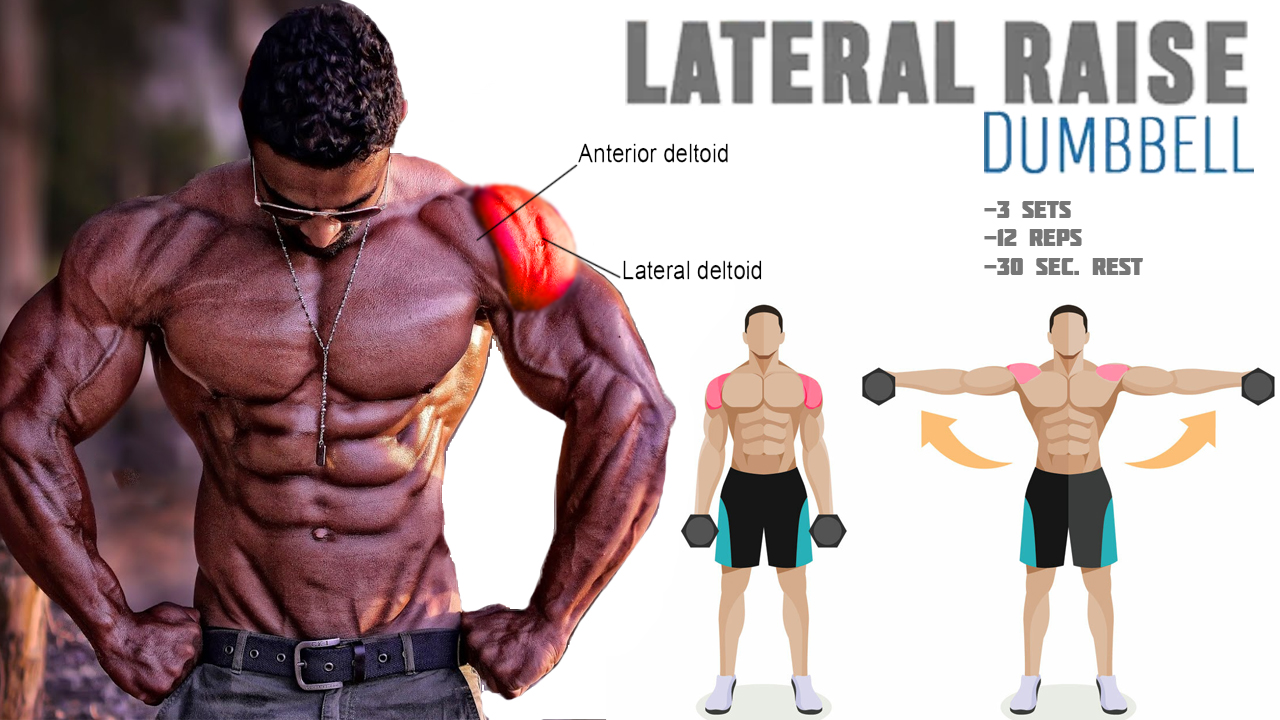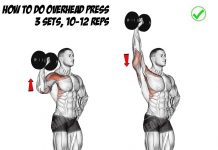How to Do Dumbbell Side Raises Routine
Shoulder lateral side raises – is a great exercise for the lateral shoulder, however often they are performed incorrectly. The main error that occurs is aiding the motion with shoulder elevation through the use of the upper traps.

[wp_ad_camp_2]
Dumbbell lateral side raises – classic exercise for all athletes, both beginners and professional bodybuilders, both men, and women. Lateral side raises allow you to properly work out the middle part of the delta and build high-quality muscles with a well-defined relief.
Dumbbell Side Raises for Shoulders
Lateral side raises not only takes the load of the deltoid but can also pump trapezius muscles.
The best way to remedy this is:
- Big down the weight on the deltoid has a lot of features against it because of its insertion, and how long the arm is. Use lower weight for more control technical.
- Work on strengthening the lower traps to stabilize the shoulder blades better.
Common Mistakes and Tips
The common error is performing these exercises in the frontal plane (straight to the side) and with a locked out elbow.
That position isn’t super favorable for the health of the shoulder joint or the elbow. The bony anatomy of the shoulder leaves little room to house all of the structures inside the joint which can cause impingement.
This can be remedied by having the shoulder in the scapular plane roughly 30 degrees in horizontal adduction (check picture for visual). Next having the elbow locked out
- Puts all the stress on the ligaments and joint and puts the weight at its highest leverage.
- At this position, if done correctly even a 20 lb dumbbell would feel heavy.
- To remedy this keep a slight bend in the elbow.

[wp_ad_camp_1]
| Read more Shoulder Workout
How to Side Raises
- Instead of using a variety of weights adjust the position of the dumbbells closer to the shoulder by bending the elbow.
- More bend to the elbow lower the torque your shoulder has to work against. This will allow you to continue using the same weight even if you fatigue.
- Lastly, if you’re looking for a full-body workout try performing also decline dumbbell raises, the change in center of gravity will have your core working very hard.
Execution Technique
- Place your feet hip-width apart with your knees slightly bent.
- Lower your arms with dumbbells down freely, then bend your elbows, maintaining position, bringing the dumbbells closer to each other at pelvic level.
- Tilt your torso slightly forward.
- With an exhalation, dumbbell lateral side raises, pushing out the elbows and little finger-twisting the hand to up.
- With an exhalation, slowly lower the dumbbells to their original position.
The Benefits and Disadvantages of Exercise
Useful features:
- Allows you to carefully work out the middle part of the deltoid muscle;
- Dumbbell lateral side raises is an isolation exercise;
- Ability to exercise both at home and in the gym. You can also perform side swings not only with dumbbells but also with other sports equipment, for example, with rubber bands or in the lower block of the crossover.
- Suitable for absolutely everyone (women, beginners, and professionals);
- The exercise is used for both pumping and mass gain.
- An excellent option for training endurance, relevant in training for relief and for weight loss;
- Can be used in supersets and drop sets.
Limitations:
[wp_ad_camp_5]
Among the shortcomings, one can note the possible discomfort and even pain in the back and shoulder joints in those athletes who have spinal or shoulder injuries.
Also, the exercise is not growing to deltoid strength.
Conclusions
Lateral Side Raises this is an excellent exercise not to be ignored. By the way, swings are no less traumatic for the deltoid muscles than the vertical press and others. To avoid negative consequences, it is important to use lighter dumbbells, although this does not always save you from injury.


















































